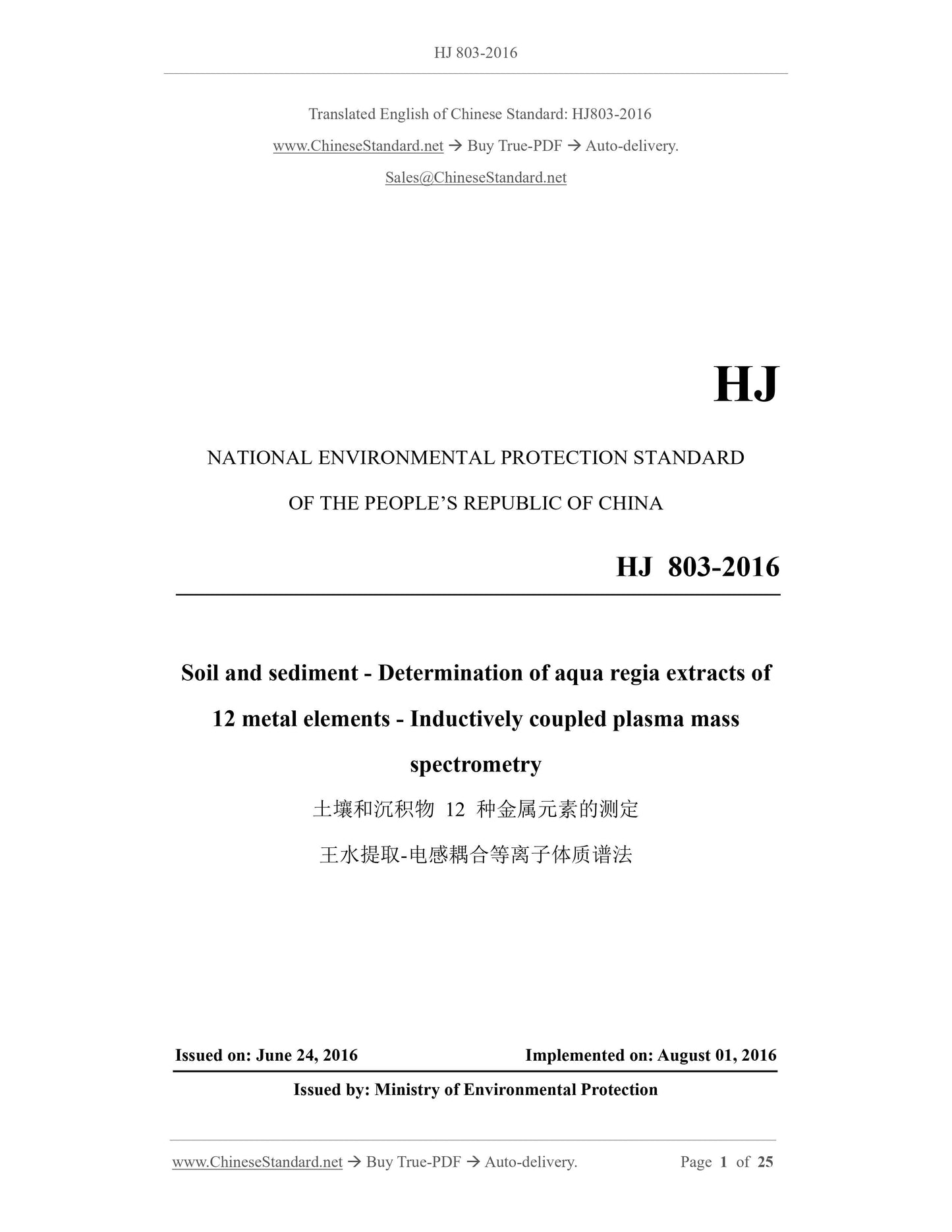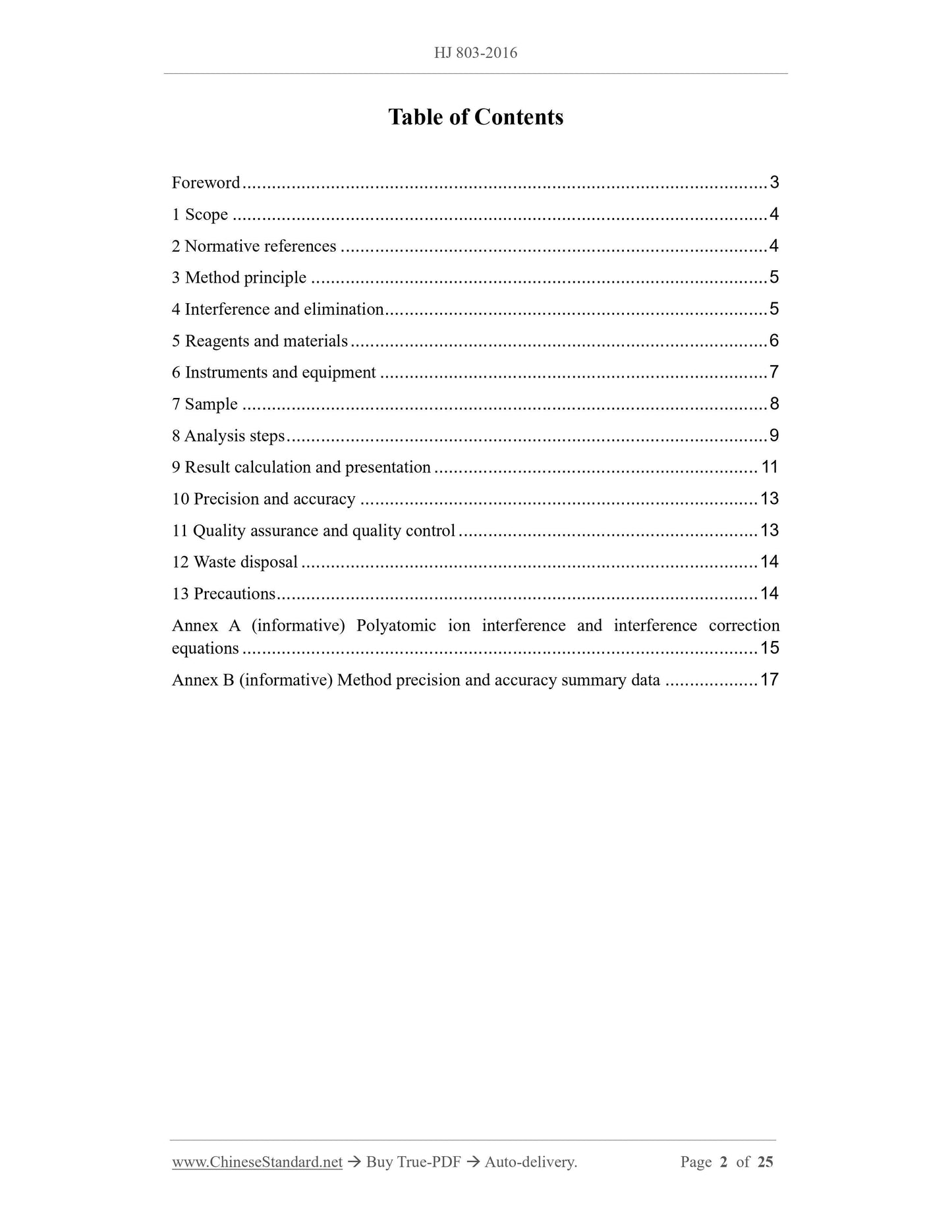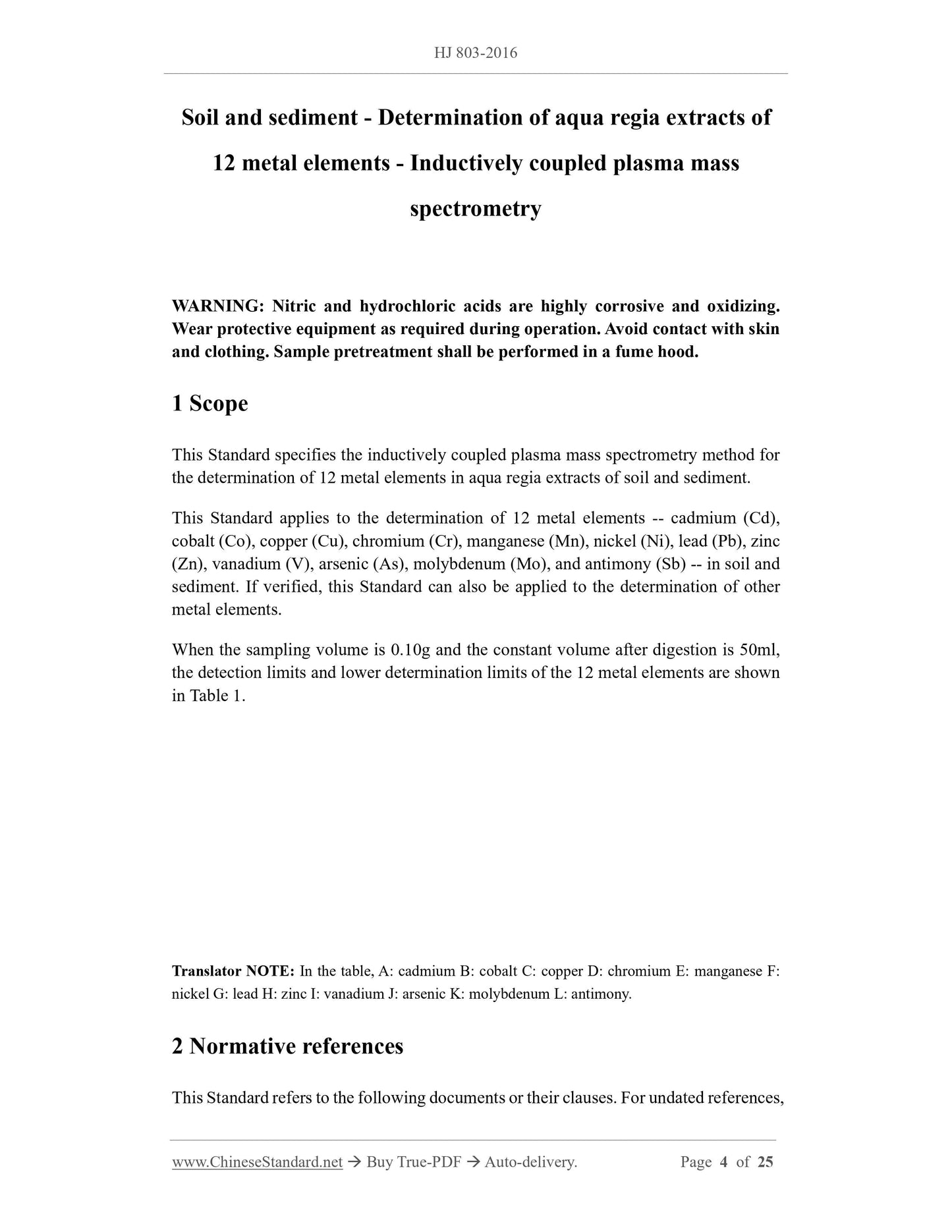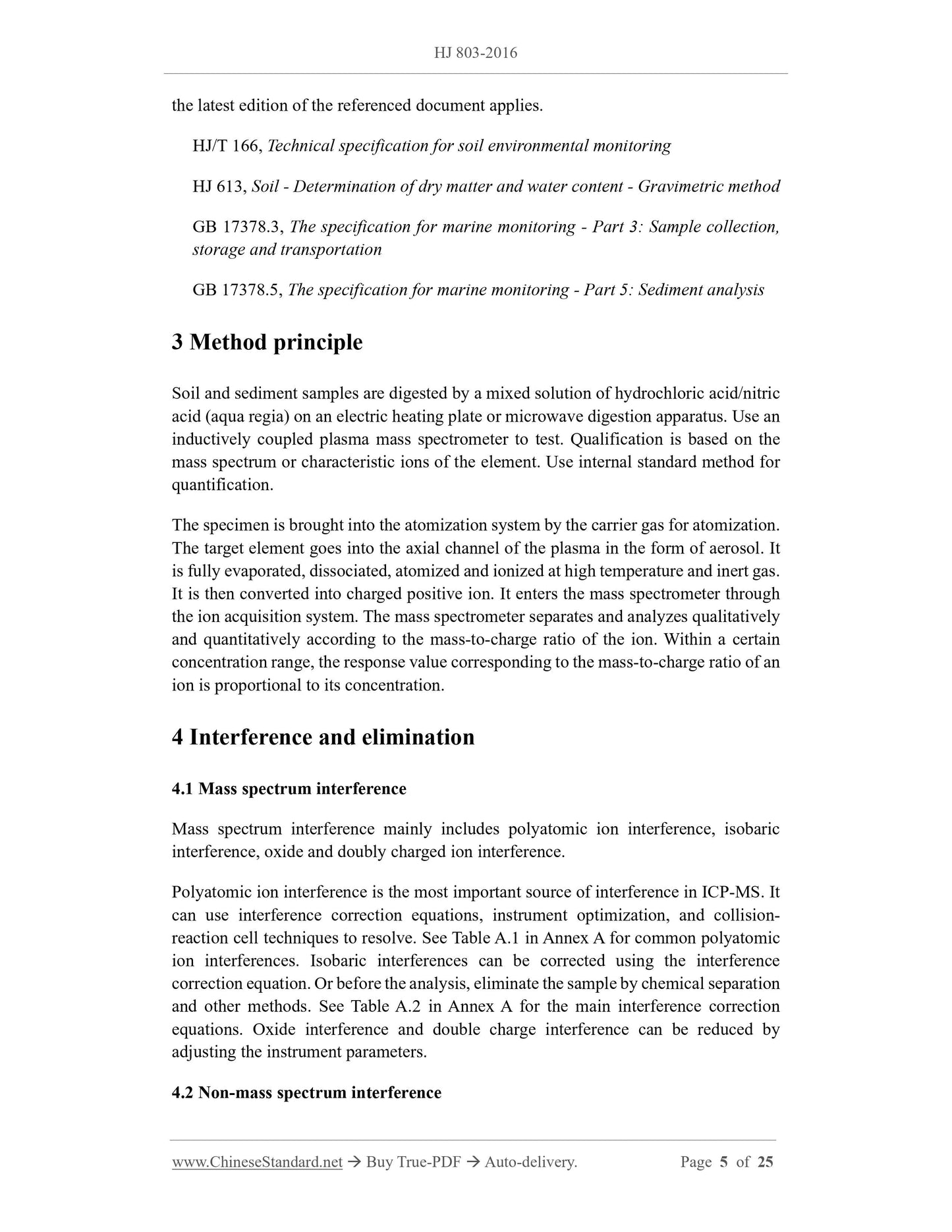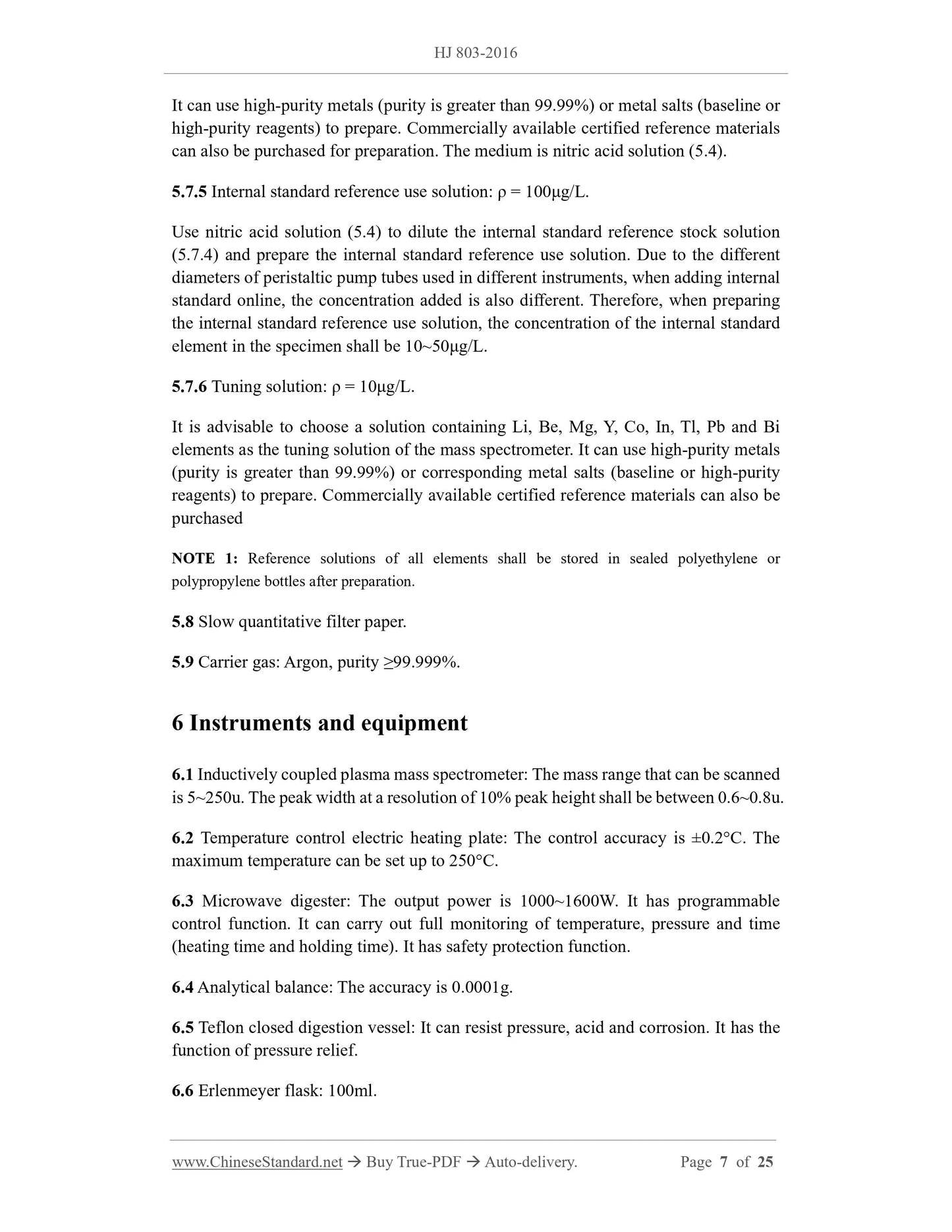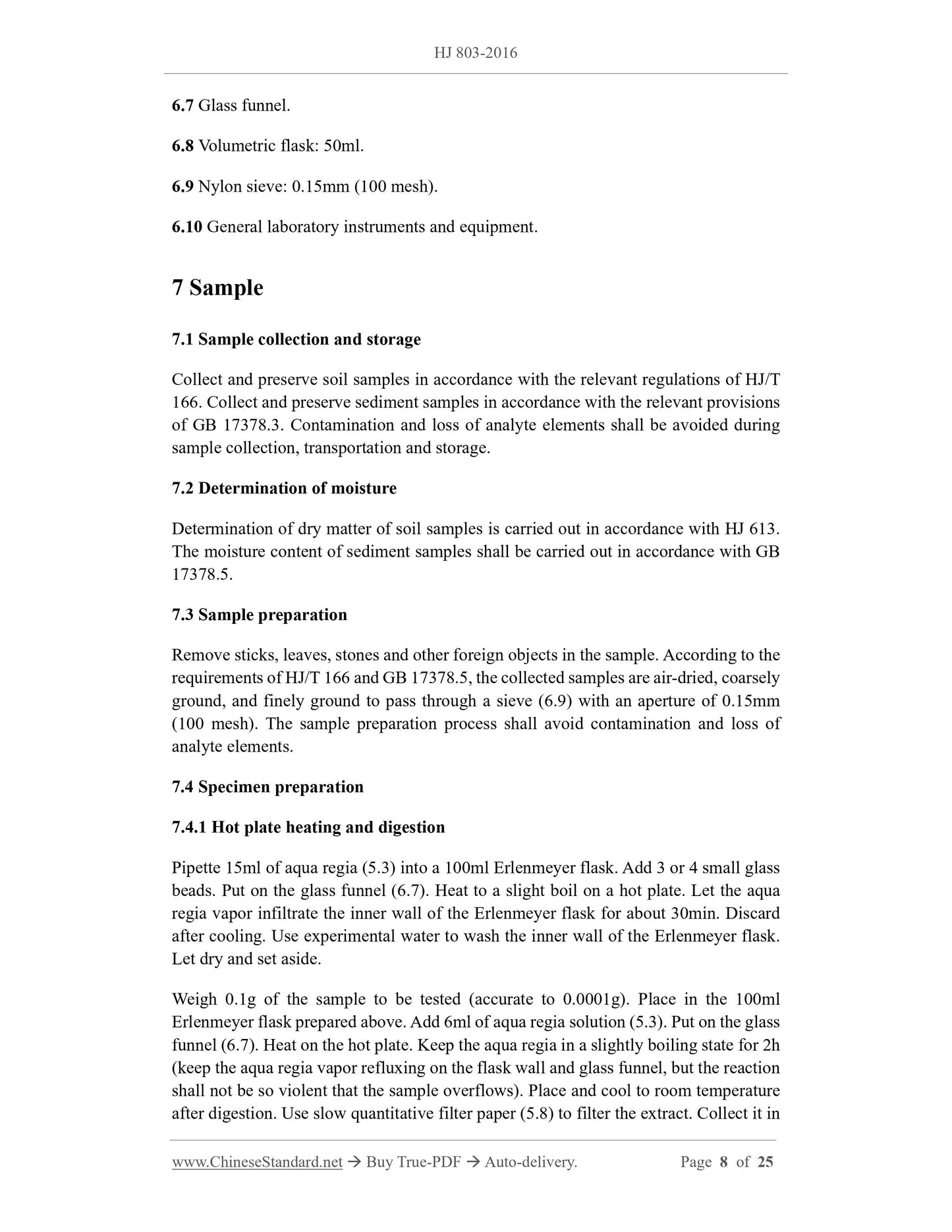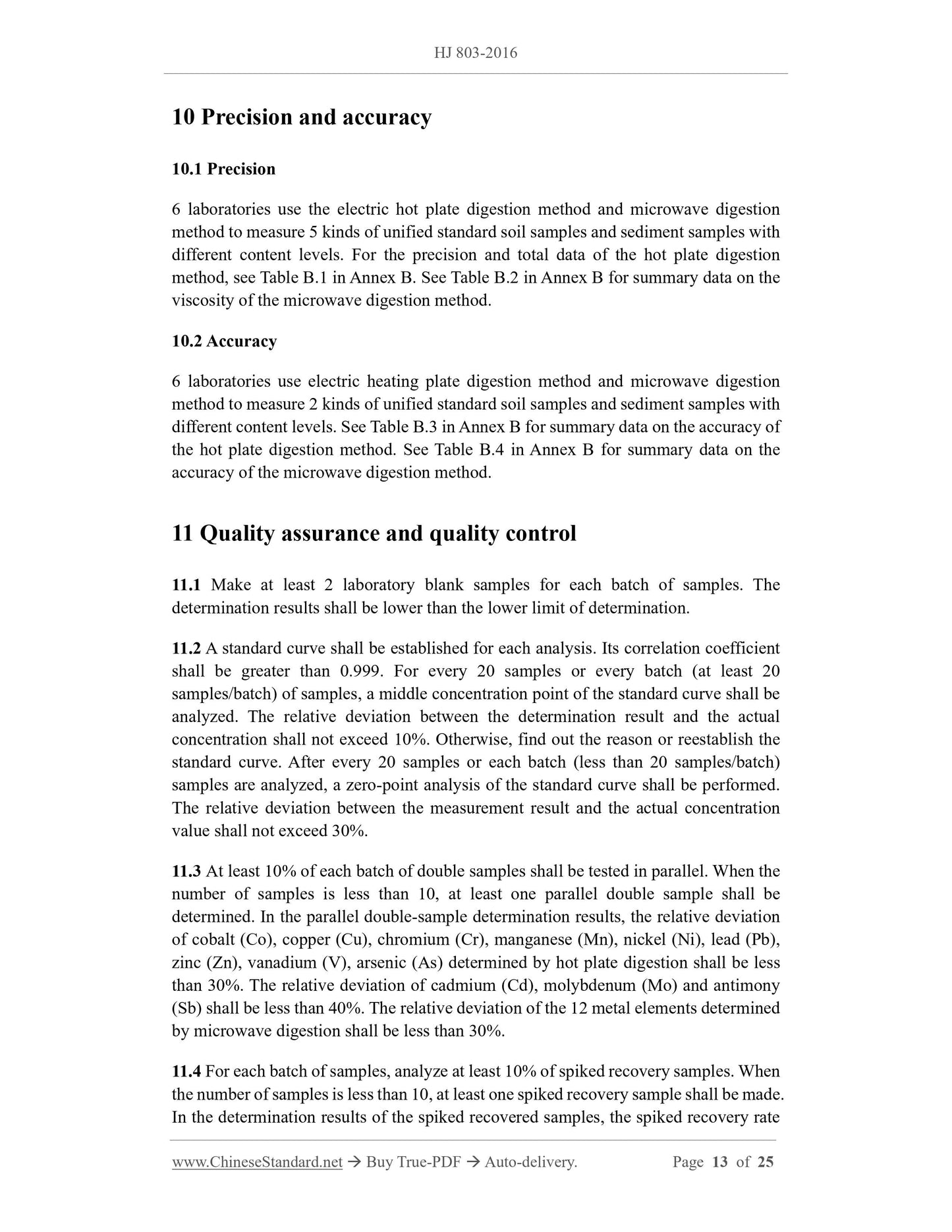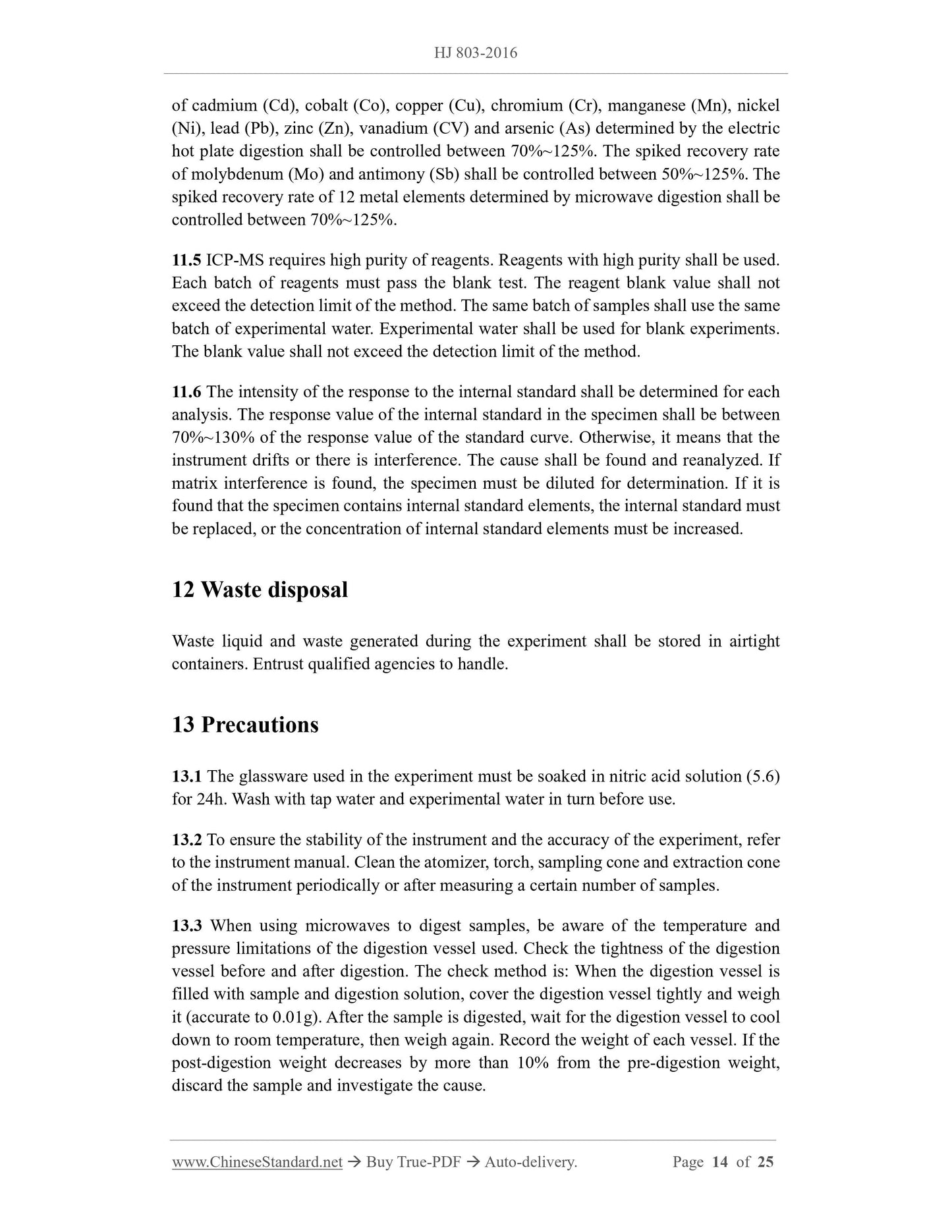1
/
of
8
www.ChineseStandard.us -- Field Test Asia Pte. Ltd.
HJ 803-2016 English PDF
HJ 803-2016 English PDF
Regular price
$460.00
Regular price
Sale price
$460.00
Unit price
/
per
Shipping calculated at checkout.
Couldn't load pickup availability
HJ 803-2016: Soil and sediment - Determination of aqua regia extracts of 12 metal elements-Inductively coupled plasma mass spectrometry
Delivery: 9 seconds. Download (and Email) true-PDF + Invoice.Get Quotation: Click HJ 803-2016 (Self-service in 1-minute)
Newer / historical versions: HJ 803-2016
Preview True-PDF
Scope
This Standard specifies the inductively coupled plasma mass spectrometry method forthe determination of 12 metal elements in aqua regia extracts of soil and sediment.
This Standard applies to the determination of 12 metal elements -- cadmium (Cd),
cobalt (Co), copper (Cu), chromium (Cr), manganese (Mn), nickel (Ni), lead (Pb), zinc
(Zn), vanadium (V), arsenic (As), molybdenum (Mo), and antimony (Sb) -- in soil and
sediment. If verified, this Standard can also be applied to the determination of other
metal elements.
When the sampling volume is 0.10g and the constant volume after digestion is 50ml,
the detection limits and lower determination limits of the 12 metal elements are shown
in Table 1.
Translator NOTE: In the table, A: cadmium B: cobalt C: copper D: chromium E: manganese F:
nickel G: lead H: zinc I: vanadium J: arsenic K: molybdenum L: antimony.
Basic Data
| Standard ID | HJ 803-2016 (HJ803-2016) |
| Description (Translated English) | Soil and sediment - Determination of aqua regia extracts of 12 metal elements-Inductively coupled plasma mass spectrometry |
| Sector / Industry | Environmental Protection Industry Standard |
| Classification of Chinese Standard | Z18 |
| Word Count Estimation | 21,260 |
| Date of Issue | 2016-06-24 |
| Date of Implementation | 2016-08-01 |
| Regulation (derived from) | Ministry of Environmental Protection Announcement No.47, 2016 |
| Issuing agency(ies) | Ministry of Ecology and Environment |
Share
